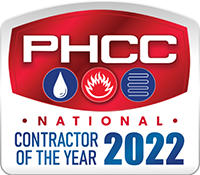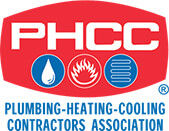
Did you know that indoor air can be even more hazardous to your health than outdoor air? One reason is that outdoor air pollutants don’t stay outdoors, but follow us inside. There are also airborne particles unique to indoor spaces that contaminate our homes, like pet dander, dust mites, and household chemicals.
Signs Your Indoor Air Quality Is Dangerous for You & Your Family
If you worry about indoor air pollutants, consider if you’ve noticed any of the following in your household.
- Overactive allergies: Many people have allergies, but if yours don’t seem to be seasonal, have gotten worse, or don’t improve even after a deep house cleaning, the reason may be poor indoor air quality.
- Mucous membrane irritation: Breathing in contaminants and dry air irritates the mucous membranes — nose, mouth, tongue, eyes, and throat — causing itching and burning, as well as a runny nose, watery eyes, and frequent nosebleeds.
- Cough, congestion, and respiratory problems: Cough and congestion are two methods the body uses to expel airborne pollutants. When these pollutants build up and strain your body, your respiratory system will show more serious reactions, such as infections and new or worsened asthma.
- Fatigue and dizziness: Chemical air pollutants, like carbon monoxide, can cause fatigue, dizziness, and sleepiness. If any of these symptoms are severe or show up suddenly, leave your home and have a professional check for issues such as gas leaks.
- Frequent illnesses: When your lungs and mucous membranes are irritated, and your body is strained from coping with unhealthy indoor air quality, you become vulnerable to airborne diseases. Airborne illnesses also move more easily through dry air, and without good air filtration and circulation, the germs stick around.
- Headaches: Frequent coughing, sinus pressure from congestion, exposure to household chemicals, and even lingering bad smells can all cause or exacerbate headaches.
- Dry, irritated skin: Bad indoor air quality can make your skin dry, red, and flaky, and lead to rashes and other breakouts. If you already have skin issues like eczema, psoriasis, or acne, indoor air pollutants and overly dry air can worsen symptoms.
Impacts of Bad Indoor Air Quality
Many symptoms of bad indoor air quality, such as watery eyes, headaches, and a stuffy nose, are immediate effects that will slowly fade as soon as you go somewhere else or improve your home’s air quality through solutions like air filtration.
However, long-term exposure to indoor air pollution can cause lasting problems like asthma or chronic sinus infections. Particularly bad air can contribute to serious diseases like cancer and heart disease, the same way extended smoking exposure can.
Let United Air Temp Improve Your Air Quality
United Air Temp has a host of tools to address poor indoor air quality, including:
- Air scrubbers and air purifiers for air filtration
- Humidifiers to combat dry air
- Dehumidifiers when excess moisture and mold growth are a problem
- Programmable thermostats that control temperature and humidity
- Converting R-22 (Freon) air conditioners into cleaner R-410A (Puron) systems
- Attic fans to improve ventilation, reduce heat and humidity, and increase air circulation
- Optimizing, cleaning, repairing, and sealing leaky, dirty, or clogged ductwork helps your HVAC system work better and prevents ducts from introducing and spreading air pollutants
- UV-C light installation to improve almost every aspect of indoor air quality
Contact United Air Temp and start your journey toward clean, healthy indoor air for you and your family.

















